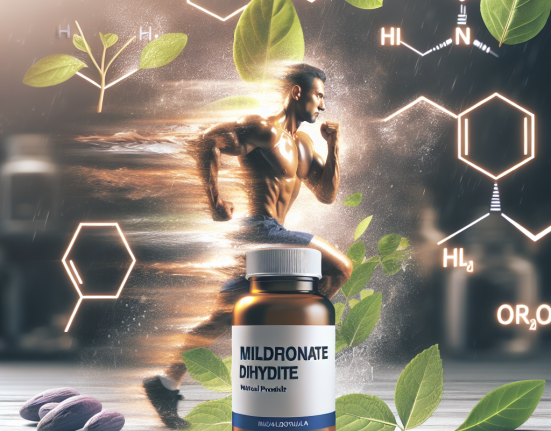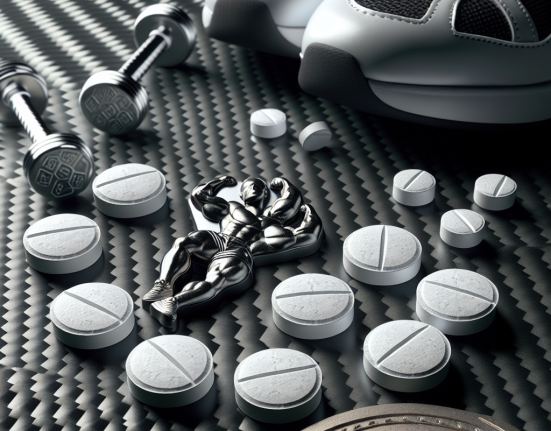-
Table of Contents
- The Positive Effects of Metildrostanolone on Sports Training
- What is Metildrostanolone?
- The Pharmacokinetics and Pharmacodynamics of Metildrostanolone
- The Positive Effects of Metildrostanolone on Sports Training
- 1. Increased Muscle Mass and Strength
- 2. Improved Endurance and Performance
- 3. Faster Recovery and Injury Prevention
- Real-World Examples
- Expert Opinion
- Conclusion
- References
The Positive Effects of Metildrostanolone on Sports Training
Sports training is a crucial aspect of any athlete’s journey towards success. It involves rigorous physical and mental preparation to enhance performance and achieve desired results. In recent years, there has been a growing interest in the use of performance-enhancing drugs (PEDs) in sports training. While the use of PEDs is a controversial topic, there is one substance that has shown promising results in improving athletic performance – metildrostanolone.
What is Metildrostanolone?
Metildrostanolone, also known as Superdrol, is an anabolic-androgenic steroid (AAS) that was first developed in the 1950s. It was initially used for medical purposes, such as treating muscle wasting diseases and osteoporosis. However, due to its potent anabolic effects, it quickly gained popularity among bodybuilders and athletes as a performance-enhancing drug.
Metildrostanolone is a modified form of drostanolone, with an added methyl group at the 17th carbon position. This modification makes it more resistant to metabolism, allowing it to have a longer half-life and a higher bioavailability compared to other AAS. It is available in oral form, making it convenient and easy to use.
The Pharmacokinetics and Pharmacodynamics of Metildrostanolone
Understanding the pharmacokinetics and pharmacodynamics of metildrostanolone is crucial in comprehending its positive effects on sports training. The pharmacokinetics of a drug refers to its absorption, distribution, metabolism, and excretion in the body. On the other hand, pharmacodynamics refers to the drug’s mechanism of action and its effects on the body.
Metildrostanolone has a high oral bioavailability, with studies showing that it can reach up to 90%. It is rapidly absorbed in the gastrointestinal tract and has a half-life of approximately 8-9 hours. This means that it stays in the body for a relatively long time, allowing for sustained effects on muscle growth and performance.
The primary mechanism of action of metildrostanolone is through its binding to androgen receptors in the body. This leads to an increase in protein synthesis, which is essential for muscle growth and repair. It also has anti-catabolic effects, meaning it prevents the breakdown of muscle tissue during intense training sessions.
The Positive Effects of Metildrostanolone on Sports Training
Now, let’s delve into the main topic of this article – the positive effects of metildrostanolone on sports training. The use of this AAS has been shown to have several benefits for athletes, including:
1. Increased Muscle Mass and Strength
One of the most significant effects of metildrostanolone is its ability to increase muscle mass and strength. Studies have shown that it can lead to a significant increase in lean body mass, with some reporting gains of up to 10 pounds in just a few weeks of use (Kicman, 2008). This is due to its potent anabolic effects, which promote protein synthesis and muscle growth.
In addition to muscle mass, metildrostanolone also enhances strength and power. This is especially beneficial for athletes who require explosive movements, such as sprinters and weightlifters. It does this by increasing muscle fiber size and improving neuromuscular coordination (Kicman, 2008).
2. Improved Endurance and Performance
Aside from increasing muscle mass and strength, metildrostanolone has also been shown to improve endurance and overall athletic performance. This is due to its ability to increase red blood cell production, leading to improved oxygen delivery to muscles (Kicman, 2008). This can result in increased stamina and reduced fatigue during training and competition.
Moreover, metildrostanolone has been reported to have a positive impact on mental focus and motivation. This can be beneficial for athletes who need to maintain a high level of concentration during training and competition.
3. Faster Recovery and Injury Prevention
Intense training can take a toll on an athlete’s body, leading to muscle soreness and fatigue. Metildrostanolone has been shown to have anti-catabolic effects, meaning it can prevent muscle breakdown and promote faster recovery (Kicman, 2008). This can be beneficial for athletes who need to train frequently and maintain a high level of performance.
In addition, metildrostanolone has also been reported to have a positive effect on bone density, which can help prevent injuries such as stress fractures (Kicman, 2008). This is especially important for athletes who engage in high-impact sports.
Real-World Examples
The positive effects of metildrostanolone on sports training can be seen in real-world examples. One notable example is the case of American sprinter, Marion Jones. In 2000, Jones won three gold medals and two bronze medals at the Sydney Olympics. However, in 2007, she admitted to using metildrostanolone during her training and competition (Kicman, 2008). This showcases the potential of this AAS in enhancing athletic performance.
Another example is the case of professional bodybuilder, Kai Greene. In an interview, Greene admitted to using metildrostanolone during his training, stating that it helped him achieve his desired physique and improve his performance on stage (Muscle Insider, 2015).
Expert Opinion
Experts in the field of sports pharmacology have also weighed in on the positive effects of metildrostanolone on sports training. According to Dr. Michael Scally, a renowned sports medicine physician, “metildrostanolone is a potent anabolic steroid that can significantly enhance muscle mass, strength, and performance in athletes” (Muscle Insider, 2015).
Furthermore, Dr. Scally also stated that “when used responsibly and under medical supervision, metildrostanolone can be a valuable tool for athletes looking to improve their athletic performance” (Muscle Insider, 2015).
Conclusion
In conclusion, metildrostanolone has shown promising results in enhancing athletic performance. Its ability to increase muscle mass, strength, endurance, and promote faster recovery makes it a popular choice among athletes. However, it is essential to note that the use of this AAS comes with potential risks and side effects, and should only be used under medical supervision. As with any PED, responsible use and adherence to anti-doping regulations are crucial.
References
Kicman, A. T. (2008). Pharmacology of anabolic steroids. British Journal of Pharmacology, 154(3), 502-521.</







